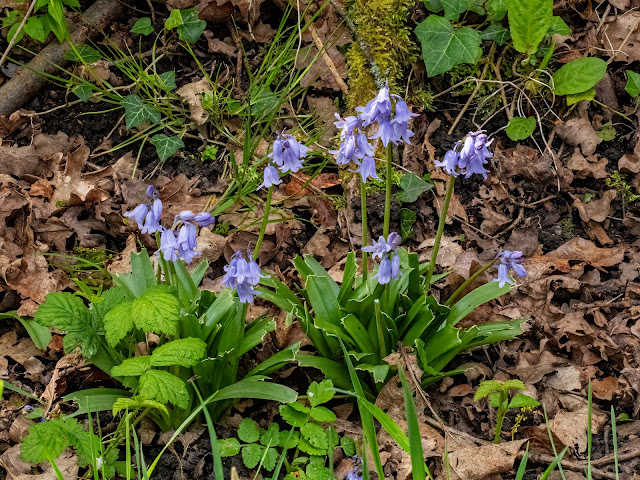Date: 8th April 2024
Time: from 7 a.m.
Weather: dry, sunny, light wind, 4°C to 8°C
Whilst it was a lovely sunny morning, it was even colder than my visit to my other local patch site at Noak Bridge Nature Reserve yesterday.
I had another very productive spring visit although I only visited the northern section of the site, primarily with the intention of watching and photographing Red Foxes. During my visit, I recorded 25 bird species, my highest total of the year to date and including 3 further species added to my 2024 bird site list, namely Willow Warbler, Collared Dove and Black-headed Gull.
As I arrived in the northern section of the site, I walked to a location where I have previously seen Red Foxes. I scattered the remains of a chicken and some dog biscuits (I forgot the tinned dog food!) and then covered myself with my bag hide to wait for a Red Fox. I waited …. and waited …. and waited …. and finally gave up after 1.5 hours!
After walking to the far end of the site, I eventually returned past the location where I had been patiently waiting for a Red Fox to appear and there was one peering through the grass at me! I saw another Red Fox distantly on the track in the woodland when I had almost returned home.
After my first site record of Willow Warbler at my other local patch site at Noak Bridge Nature Reserve yesterday, I had yet another encounter with a singing male this morning in the bushes surrounding the small pond at the extreme northern end of the site. This species was once relatively common in Essex but it is now relatively difficult to record so seeing 2 singing male Willow Warblers in consecutive days was totally unexpected.
I recorded both Chiffchaffs and Blackcaps during my visit: I saw 1 singing male Chiffchaff, heard 2 other singing males and heard 2 calling birds plus I heard 3 singing male Blackcaps.
Whilst waiting for the Red Foxes, I saw a soaring Common Buzzard (for the third successive visit), a briefly displaying Stock Dove, singles of both Green Woodpecker and Great Spotted Woodpecker and 4 fly-over Mallards. Whilst watching the Willow Warbler, I also saw 2 male Mallards and a single Moorhen on the small pond.
The cold temperature meant that I failed to record any butterfly species.
Species recorded during this visit were as follows (heard only records in italics):
Site totals for 2024 to date (2023 totals in brackets):
Total species list for the site

























